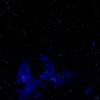Hi All,
Just a couple questions about how I should approach rendering my client terminals for my game engine I am making.
Here's my current scope:
2D game engine. and I am designing an authoritative server, with a hash-grid where all game objects find themselves in buckets. Clients report their input every frame, and go through a lock-step to get their position from the server, along with their actions.
The clients have access to all of the map data for rendering, but do not have access to of the GameObjects. How should the server communicate which objects to draw?
I want the server to create a list of objects to draw, based on the clients position in the hashgrid, and pass it to the client. Can I pass a list of pointers? or do I have do pass a list of unique object IDs? It seems like passing all the objects over the connection would be pretty heavy on bandwidth.
I realize I may be leaving out some important details, and I'd be happy to try to give more information, but if anyone has any input or reference to documentation, I would appreciate it.
Thanks!






